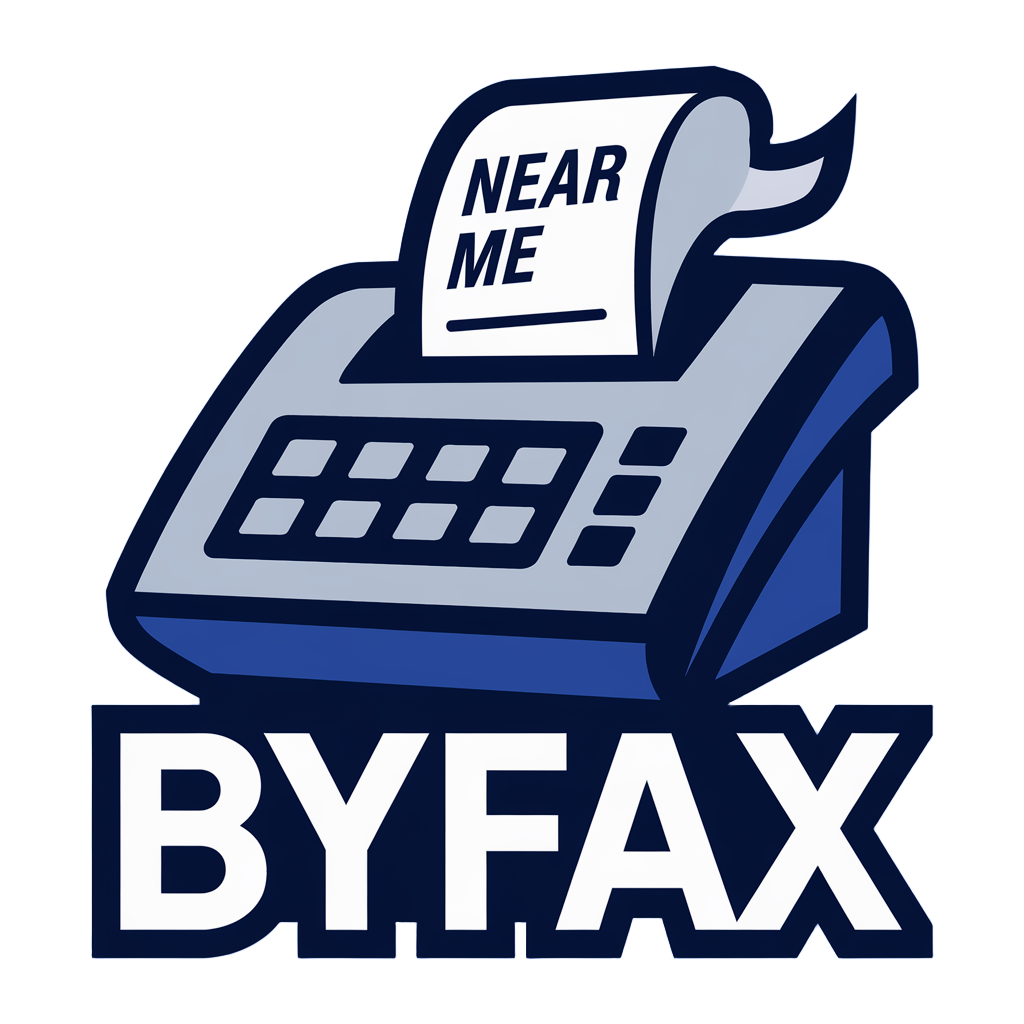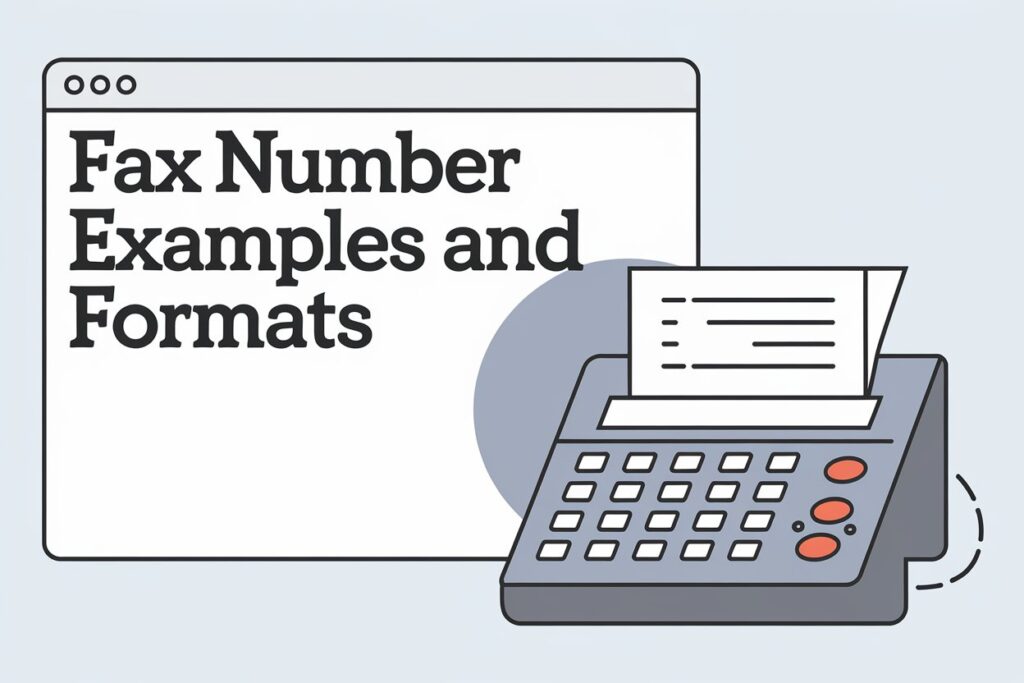The global use of fax roots from the reliability and the security that it offers to users which may range from individuals and businesses. However, most new users or those who were not familiar with fax beforehand have a hard time memorizing and understanding the functions of each section in each fax number.
Having a clear understanding of what the different fax number formats can save you time and prevent some of the common mistakes. This guide will help you on what a fax number is, the different types of fax numbers, and the common formatting errors, and why fax numbers still matter even if online faxing exists.
What is a Fax Number?
The main purpose and function of a fax number is like a telephone number where someone can send and receive documents via a fax machine. Having a correctly formatted fax number ensures seamless communication across different devices and locations locally and internationally.
What are the Types of Fax Numbers?
There are many different types of fax numbers, each serving their own unique purpose. But, remembering all of these types can be a tricky task. In this next section, let’s try to remember a few key factors to make remembering each fax number easier.
International Fax Numbers
Having access to an international fax number can allow you to transmit documents across the borders. These international fax numbers typically include the following:
- A “+” sign or international access code (e.g., 011 in the US).
- The country code (+1 for the United States, +44 for the United Kingdom, +61 for Australia, +49 for Germany, +81 for Japan, and more).
- The local area code and fax number
Example: +1-212-555-1234
Domestic Fax Numbers
These classifications of fax numbers are commonly used for sending faxes within a single country. These numbers can be further classified into different functions and types:
Local Fax Numbers
Depending on the country, local fax numbers may include an area code followed by the fax number. These assigned numbers may vary depending on the city, state or particular region.
Example: 312-555-6789, in this case, the “312” area code is assigned to Chicago, Illinois.
National Fax Numbers
These are shorter numbers compared to the local fax number. They typically omit the area code, which can be used within smaller geographic areas.
Example: 555-1234
Fax Numbers with Extensions
Aside from the standard fax numbers for domestic and international use cases, other fax numbers also include extensions. These extensions are usually used within organizations to direct documents to a specific department.
Example: +1-212-555-1234 Ext. 567
Key Examples of Fax Number Formats
Common Fax Formats by Country
| Country | Example Fax Format | Notes |
| United States | +1 (555) 123-4567 | Includes country code (+1), area code, and local number. |
| United Kingdom | +44 20 7946 0958 | Includes country code (+44) and area code (e.g., 20 for London). |
| Australia | +61 2 9876 5432 | Country code (+61) followed by area code and number. |
| Canada | +1 (416) 987-6543 | Similar to the U.S., with +1 country code and regional area code. |
| Japan | +81 3-1234-5678 | Includes country code (+81) and local area code (e.g., 3 for Tokyo). |
Special Formats for Businesses
As mentioned previously, aside from the normal fax numbers, businesses and large companies or organizations can also acquire their own unique fax number. This special addition may be dedicated fax lines with extensions or custom routing numbers to make communications easier.
For example, the headquarters of a company can make use of the extension 200 for its customer service department. It would later result into a number like this, +1-800-555-1234 Ext. 200.
What are the Common Errors when Using Fax?
Even with the proper knowledge and idea into how each fax format is arranged, common mistakes can still happen to most of us. These range from different causes and here’s how you can avoid them:
Missing Country Codes
When you are trying to fax documents internationally, some individuals forget to include the country code, or encode the wrong country code. Forgetting to include the country code can sometimes lead to failed transmissions. Before confirming a fax transmission, always double-check that the “+” sign or atleast the correct international access code is included.
Incorrect Prefixes or Extensions
Aside from making sure that the right country code is included, most individuals tend to encode incorrect area codes, prefixes, or extensions. These errors may result in sending the fax to the wrong recipient. Even if faxing is secure, sending the documents to the wrong individual is a big mistake. Before confirming, make sure that all digits are accurate, especially for corporate lines with extensions.
Why Are Fax Numbers Important in Online Faxing?
With the rise of online faxing services, traditional fax machines are no longer a need. However, the function of fax numbers are still essential for many reasons.
- Professionalism: A dedicated fax number lends credibility to businesses.
- Privacy: Fax numbers provide a secure way to transmit sensitive documents.
- Global Accessibility: International fax numbers make it easy to communicate with clients or partners worldwide.
- Integration with Online Services: Modern online fax platforms allow users to send and receive faxes via email or apps, using traditional fax numbers.
Frequently Asked Questions
How many digits are there in a fax number?
The amount of digits in a fax number will vary by country. A good example in this case, US fax numbers typically have 10 digits, which includes area code and the number. Meanwhile, international fax numbers may include additional digits for the country code and extensions.
Is there a free fax number available?
Yes, there are online fax services that offer free fax numbers, which can be part of a trial or basic plan.
Can I use my phone number as a fax number?
In many different cases, you can use your existing phone number as a fax number as long as it is connected to a fax machine or online fax service.
Conclusion
Fax numbers remain a vital part of modern communication, bridging the gap between traditional methods and online solutions. From understanding international formats to avoiding common errors, this guide provides the tools needed for efficient faxing.

